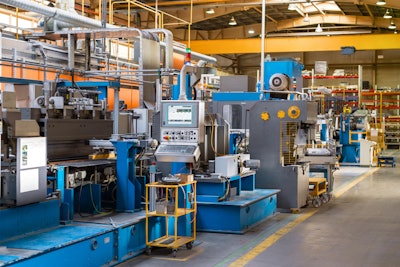
Recent years have ripped the veil off the interconnected nature of the products we use daily and the global nature of the world, highlighting both similarities and vulnerabilities. Supply chains are often thought of as the way to move a final product to its end-user without giving credit to the complexity of creating those products within their chains.
With current pressures on partnerships, international tensions, and reduced avenues for raw materials, finished goods are becoming a smaller part of the supply chain concern. Tackling more substantial issues requires understanding the current landscape and how it impacts manufacturing, large and small. Various logistics services and professionals are involved such as transportation, warehousing and distribution. Each performing their part in a carefully coordinated dance.
There are some tricks, tips and warning signs to ensure that the right materials are available when needed, production processes are efficient and effective and the finished product is delivered to the right place at the right time.
Companies can apply some broader supply chain best practices to their manufacturing work, either directly or by adjusting practices for parts and raw material sourcing.
Companies were often told to diversify their carrier pool for order fulfillment to minimize pandemic-related disruption. A manufacturing adjustment could be to secure alternate sourcing for raw materials and select secondary partners that use different carriers, eliminating that potential single point of concern.
7 core steps and processes for today’s supply chain concerns
- Understand your supply chain. It’s important to have a clear and detailed understanding of your upstream supply chain. Break down partners, technology, and requirements across all steps, including the different stages of production, materials involved, the logistics of getting the products or materials to the next step and to finished products reaching customers.
- Identify potential risks. Along the supply chain, various threats can disrupt production or delivery. It’s important to identify these risks and have contingency plans in place to mitigate them. Look at risks for each step and note if you or a partner causes the concern and who might be able to address it.
- Develop strong relationships with all suppliers. Building strong relationships with suppliers can help ensure a smooth and efficient supply chain. Stability helps other companies rely on your business and prioritize its needs. When sourcing secondary partners and contingency plans, look for reliability and promises to deliver high-quality materials on time as needed. Consider discussing the importance of emergency orders and setting requirements or incentives for these.
- Monitor and track progress. Regularly monitoring and tracking progress along the supply chain can help identify any issues or bottlenecks early on and allow for timely corrective action. Supply chains generate significant quantities of data at every link. Collect and use that information.
- Be transparent and communicate regularly. Being transparent about your supply chain can help build trust with customers and partners. People are often more inclined to purchase from companies that are open and honest about their practices and needs. One of the best ways to maintain transparency is to regularly communicate with partners and customers about the status of an order or expected needs.
- Use technology to your advantage. Various technologies can help optimize and streamline the supply chain, such as supply chain management software and automated tracking systems. Utilizing these technologies can help increase efficiency and reduce the risk of disruptions. When expanding your tech stack, look at industry best practices for data sharing. This will often mean ensuring systems support EDI and API capabilities, allowing for better automation and control of data.
- Foster a culture of continuous improvement. It’s important to continuously review and optimize the supply chain to ensure it is efficient and effective. Encouraging a culture of continuous improvement can help identify opportunities for improvement and drive innovation in the supply chain. This is a bit cliché for any such list, but it remains important. Supply chains are inherently iterative, so building your management approach in the same way makes it easier to adapt and take advantage of trends or changes as they arise.
5 adjustment steps to common concerns.
There are various threats and challenges that companies need to consider when operating in the modern supply chain landscape. Some of the most significant ones include the following:
- Globalization. With supply chains becoming increasingly global and complex, companies must manage the risks and challenges of working with suppliers and partners across different countries and regions. This includes cultural differences, language barriers and legal and regulatory environments. The ongoing invasion of Ukraine is a core highlight as it has disrupted many raw materials used across multiple sectors.
- Sustainability. Consumers are increasingly demanding more sustainable products, and companies need to consider the environmental impact of their supply chains. This includes managing the carbon footprint of transportation and logistics, reducing waste and using eco-friendly materials and production processes. Modern customers can research your claims and are vocal when they feel a promise is disingenuous. Use the data collected from partners and operations to ensure that you’re making realistic green pledges and achieving those aims.
- Security. Supply chains can be vulnerable to various security threats, such as cyberattacks, theft, and sabotage. Companies need robust security measures to protect against these threats and maintain the integrity of their supply chains. Each new partner is a new threat vertical. Work with everyone to ensure they’re following cybersecurity best practices and keep your systems safe. Internally, regularly train employees and test systems to limit phishing and social engineering risks.
- Volatility. The modern supply chain landscape is characterized by high levels of volatility and uncertainty. Companies need to be prepared for unexpected events. Such as natural disasters, pandemics and political instability. Which can disrupt production and logistics. What’s your backup plan if a specific partner is impacted? What about if the disaster harms an entire region? Are you sourcing parts and raw materials from far afield or are there still regional risks in your chain?
- Competition. The supply chain landscape is becoming increasingly competitive, with companies constantly looking for ways to optimize and differentiate their supply chains. This requires companies to be innovative and agile to stay ahead of the competition. When carrier capacity is an issue, supply chains compete for freight space and shipping containers. Don’t neglect threats that live beyond your sales and marketing departments.
The modern landscape is rife with opportunity and risk. Threat categories are evolving, and every company will need a robust, resilient supply chain designed to keep working when any link breaks. Manufacturing a product in a supply chain only presents additional challenges around sourcing and internal capabilities, but thankfully best practices will help shield from these challenges. It’s doable as long as companies are willing to step up their risk mitigation efforts.
















